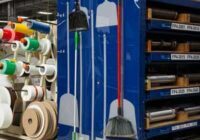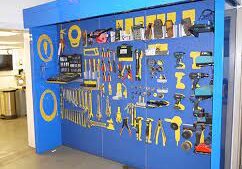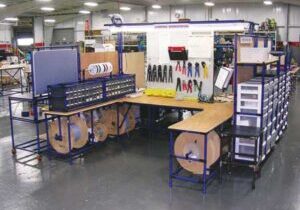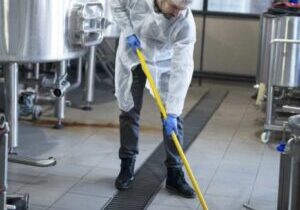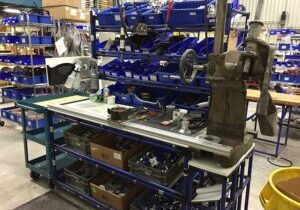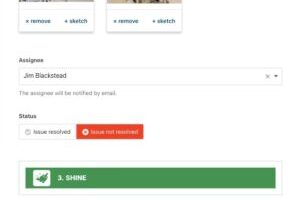How does 5S work?
How does the 5S Methodology work and where to begin.
By Andy Pritchard | November 9, 2022 | 2 minute read.
The 5S methodology is built on 5 easy to remember steps that have a natural flow to them as each step builds upon the success of the last. Once begun the 5S cycle should continue indefinitely with a sort of natural rhythm that continues to make incremental improvements to the efficiency and safety of your plant.
But where to begin?
Let's take a look at how a 5S implementation could work at your facility.
Plan to Plan
Before embarking on your 5S journey its important to have the buy-in of all the key stakeholders in affected departments - production, safety, maintenance, and quality. Build a core cross-departmental team of 5S champions from that you can leverage to help brainstorm how best to proceed based on the specifics of your plant.
Remember that this team will be responsible for not only organizing your 5S program, but also encouraging others to participate, so be sure to select managers that are credible and experienced leaders interested in guiding others through organizational change.
Build a Business Case
If there is resistance to the idea of implementing 5S methodology, consider building a business case to measure the potential positive impact to your facility. Where possible use quantified costs and goals to avoid ambiguity.
The costs associated with 5S are relatively simple, primarily focused around training, execution, and ongoing auditing:
- How many person hours will be required to train on the new methodology?
- How long will it take to execute on each “S”?
- How frequently will you audit?
- Who will be responsible for completing them?
- How will you capture the data? Paper forms or via a software solution like Weever?
- If using paper forms, who will complete data entry and data analytics?
- If using software, who is your software budget?
In terms of positive benefits of 5S the easiest way to quantify would be to take a relatively conservative gain - say a 10% improvement for example- in all the areas that 5S has been historically shown to be impactful. For example, you could estimate a 10% productivity gain over 6 months, or a 10% reduction in days missed due to fewer injuries. You may want to focus on fewer quality issues or wasted materials instead.
At this point rough estimates on each of these cost and benefit figures is fine. You will learn as you go, getting more precise with your numbers. Remember that the 5S methodology is cyclical - so you’ll have multiple “rounds” of 5S audits to get better at quantifying these sorts of costs and gains. Be sure to document before and after results - both visually via photographs - and evaluate whether your program delivered the gains you estimated! Evaluation and re-evaluation is an important part of this process.
If you need a template for your business case here is a site with a few different types that you may find helpful.
5S Training
Once you have gained alignment, you can start implementing 5S by providing training to your staff to understand the system. This may be followed up with one-day sessions with each employee or team to ensure they are on the same page as far as implementation is concerned.
The best results for training usually occur by quickly reviewing the 5Ss and then executing a 5S on an actual workstation. Use small groups and ask for participation.
If you are not equipped to execute training, or you don't feel confident you can pull it off, you may want to consider hiring experts.
The Action Plan
Once you have buy-in and quantified goals its time to start training! Consider scheduling a half or full day session with small groups in specific workstations to demonstrate both the theory and practical application of 5S methodology.
Step 1: The 3 Day Blitz
Sort, Set in Order, Shine:
Schedule a 3 day 5S action plan where the first 3 days will correspond to the first 3 “S” Steps - Sort, Set in Order, and Shine. You may want to stagger these days out to one per week over a 3 week period to allow for follow up items like ordering visual guide labels, new equipment and storage, or the right cleaning materials.
Day 1: Sort
Clutter is a serious concern in manufacturing plants, and it's very easy for unnecessary items to build up in your workspaces. This can lead to all sorts of issues like lost items, safety hazards, and duplication of tools or materials. Day 1 should be focused on identifying and eliminating any items that are known to be unnecessary, hazardous or duplicated.
As preparation for Day 1 you may need to consider where extraneous items will be stored once removed, like an external storage area or someplace offsite. You may also want to consider your strategy for disposing of all unnecessary items via donation, recycling, disposal, or resale.
Another consideration for your Day 1 Sort will be criteria for how to determine if an item is unnecessary. Each item's purpose, uniqueness, and importance to job function should be evaluated and documented. If it's unclear whether an item is critical, consider using a visual tagging system where ambiguous items can be marked as unknowns and placed in a designated area. If, during the week between your “Sort” and “Set in Order” days, the item isn’t used you can confidently remove it from the workspace to your central storage location.
Remember to thoroughly document during your Day 1 Sort. Taking before and after photos of your workspaces, your central storage, and tagged items will demonstrate visually the benefits of your efforts and help keep momentum high for days 2 and 3!
This is a great video that might help: https://www.youtube.com/watch?v=tY836fURQss
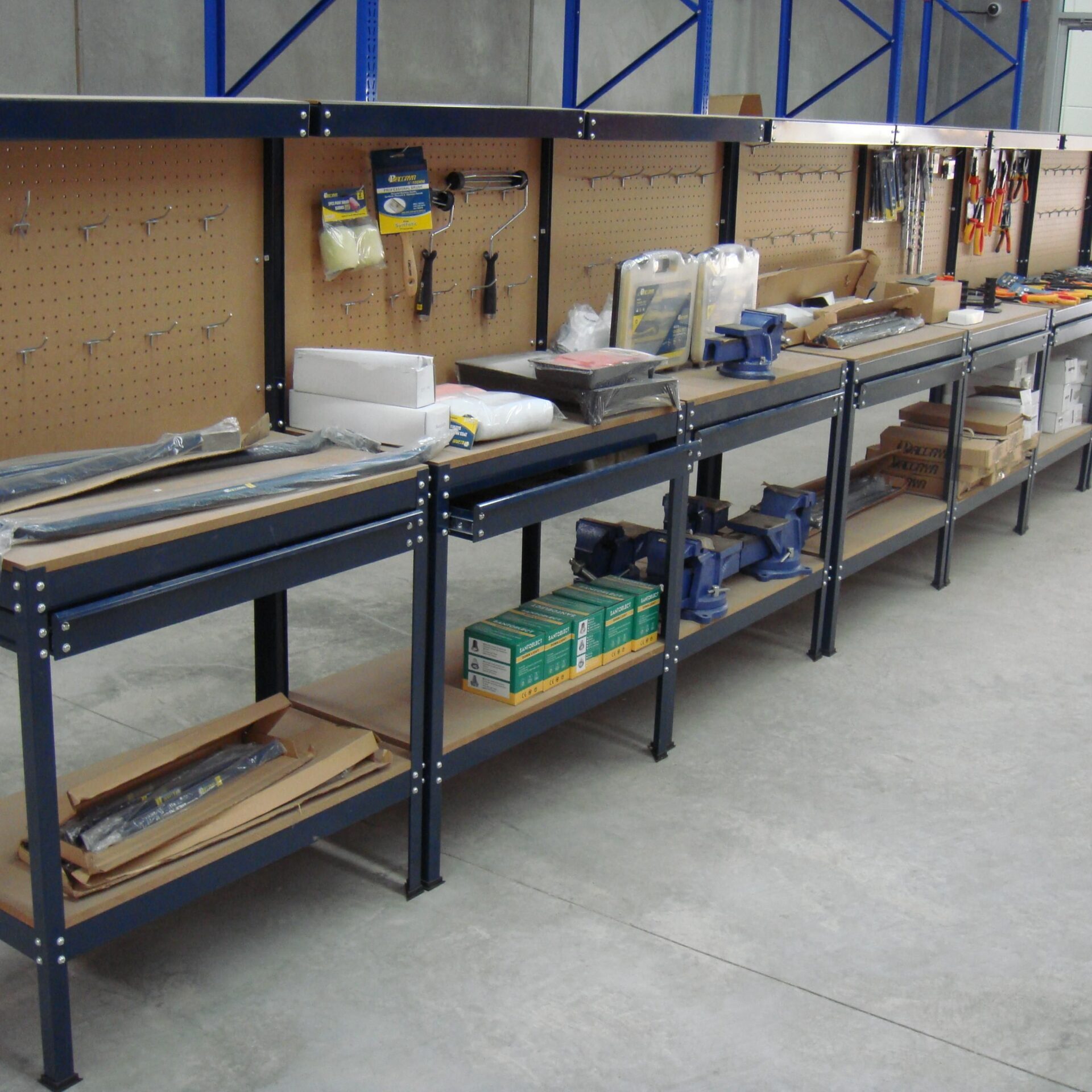

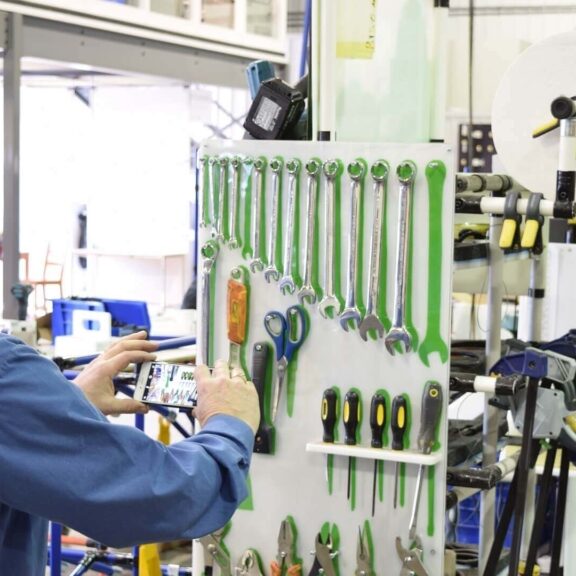
Day 2: Set in Order
Day 2 is all about having everything in its right place! Once all the clutter has been removed your team can get started on finding the ideal spot for tools, materials, and equipment. Key considerations should be efficient workflow - how can you reduce wasted time and energy looking for or moving items while your staff are working.
Two key considerations for Set in Order are appropriate storage and visual identification. For specific items new areas in the workplace may be required such as hanging wall storage or modular storage. Both existing and new storage drawers, bins, or hooks/hangers should be labeled so that once a tool or item is removed it's easy to figure out how to put it back correctly. You may also want to consider a log book to record the new storage location of items to avoid confusion and lost time in the following days.
Just like your Day 1 Sort, remember to document your Set in Order efforts thoroughly. And don’t forget to complete the evaluation of the tagged items from Day 1. If it was decided the item is critical, find a new home for it during Set in Order. If they haven’t been used in the prior week, move them to your central storage location to reduce clutter.
Here is a great video overview of Set in Order: https://www.youtube.com/watch?v=KWz0oGhTw20
Day 3: Shine
Dirty work environments are inefficient work environments. The presence of dirt, dust, and leaked fluids all contribute to equipment failures and workplace hazards. Machine downtime and injuries are the ultimate result of a failure to keep workspaces clean, both of which can sap the productivity and profitability of your facility.
A 5S shine is far more than a quick sweep and dust. The 5S Shine is closer to a full clean, inspect, and lubricate of your entire plant, similar to one you might find in a new autonomous maintenance program. For more information on autonomous maintenance see our blog posting here: https://weeverapps.com/maintenance-management/how-autonomous-maintenance-programs-work/
Some activities you may want to consider during your Shine day are:
- A thorough sweep or dust of all surfaces
- Removal of grease and stains
- simple repairs to surfaces and storage areas
- replacement of equipment components experiencing wear-and-tear
- tightening of bolts and screws
- repainting floors, walls, and equipment
- rust removal
Clean work environments have been proven to improve the operating efficiency of equipment, reduce workplace safety risks, and improve employee morale. Completing a single day of Shine is a good start, but should be a never ending process. By elevating cleanliness standards you are not just making a cleaner workplace, you are making a cultural change and moving towards the ideals of continuous improvement.
As always, take photos to document the before and after to help reinforce the value of your ongoing 5S efforts. Review and resolve any outstanding action items from your Sort and Set in Order days, and take an inventory of what went well and areas of improvement for your next round of 5S Days.
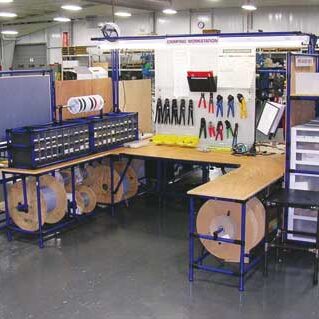

Step 2: Standardize
The 5S Methodology is not a “one and done” type of process. Although your first few 5S were based around specific days, the real value comes from codifying your gains as the new normal. The Standardize step involves making 5S duties a part of your regular daily, weekly, and monthly duties.
You and your team undoubtedly learned a lot during the planning and execution of your first 3 5S days. Use that as a starting point to build a first draft of new 5S duties and make sure to get feedback from your staff and managers to ensure your list is complete and impactful.
The goal is to maintain the new standards of cleanliness and efficiency your 5S Days have made. Post these new duty rosters in a public area as visual reminders that 5S is an ongoing process.
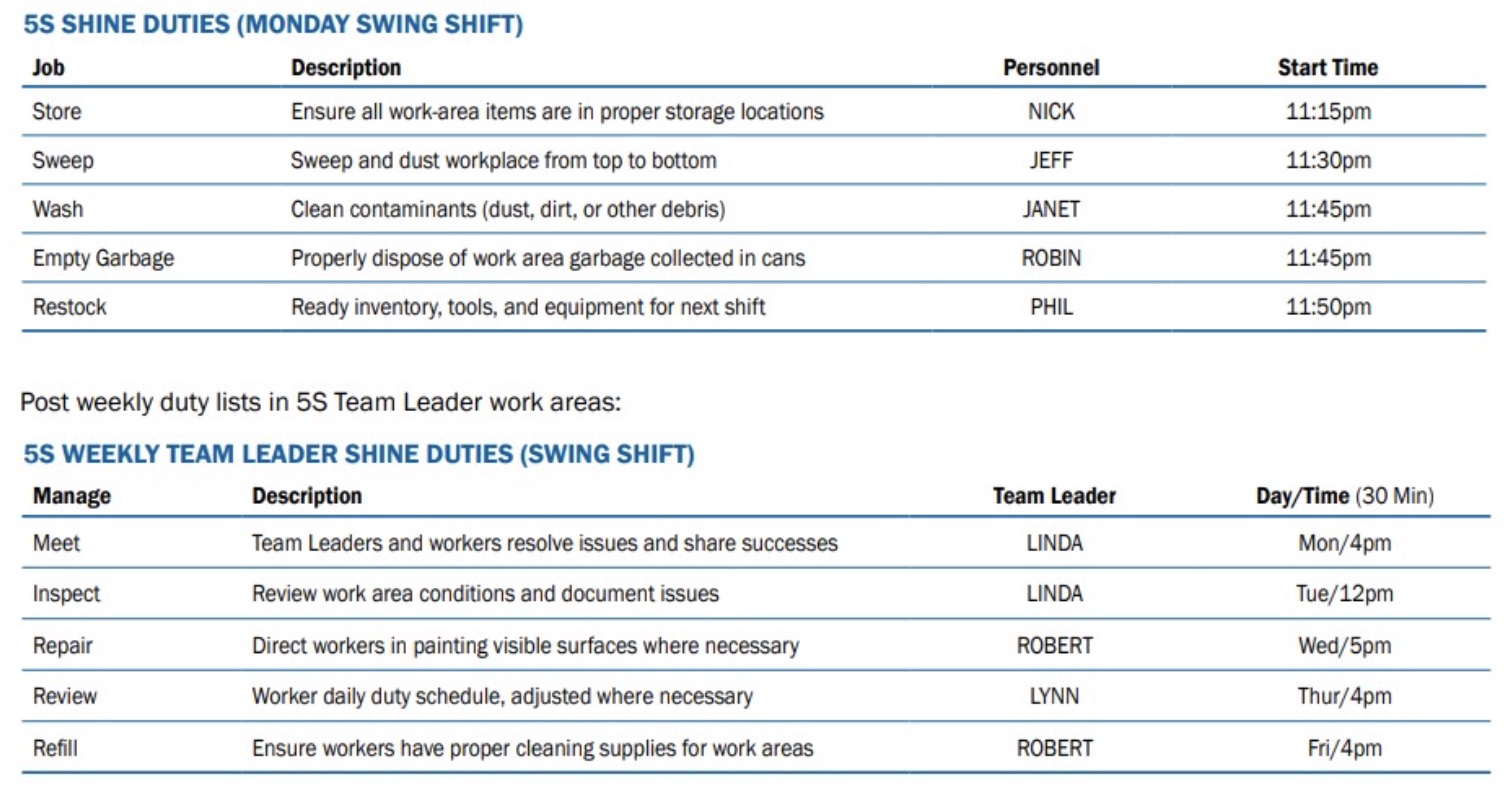
You may want to consider a new or updated system of visual communication to cement new best practices around your plant. Signage around safety, storage best practices, equipment location, floor traffic guides etc should all be standardized for colour, font, and text size.
Here is a great video overview of Standardize: https://www.youtube.com/watch?v=ET4STWsul-s
Step 3: Sustain
The final step in 5S is all about the all-important process of cultural change and maintaining the forward momentum of your new continuous improvement culture. A good place to start is Sustain is by completing a full progress evaluation of your efforts to date.
Remember the Business Case you built prior to starting your 5S journey?
Once you have implemented a new schedule of duties under Standardize it is an excellent time to review your efforts and their gains thus far. How have your efforts matched up to your productivity, safety, and quality estimates so far?
If it's premature and the full impact of your new 5S program isn't fully realized yet, build a duty log for the 5S committee focused on getting the data you need to do a full evaluation. Once you have completed your evaluation, be sure to broadcast those results to both staff and management. After so much hard work people appreciate seeing the fruits of their efforts laid out in a clear and concise manner.
Continue to document visually as well, taking periodic photographs to demonstrate the new 5S system as it evolves. Over time you may find that some of the gains of your efforts erode as your staff begin to focus on other improvement efforts. When necessary, revisit the first 4 steps to ensure the right results are maintained. 5S is a process that is constantly ongoing, not a single event in time.
As part of Standardize, remember to train your new Staff on 5S methodologies and best practices. Tenured staff can be resistant to change and may not adopt new practices and procedures easily. Ensuring new employees are well-grounded in 5S best practices and participating in the new duties can result in enthusiastic champions that will gradually win over resistant employees.

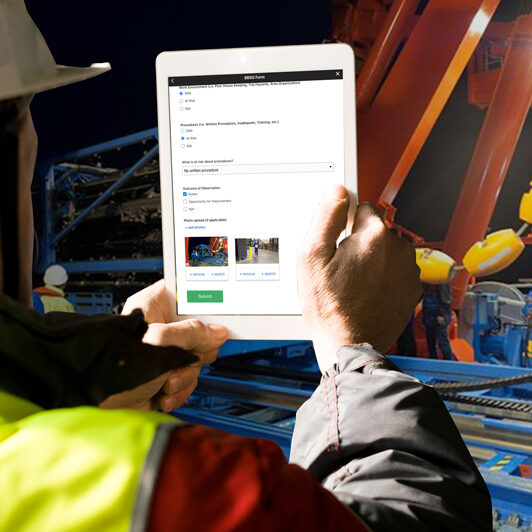
Continue Reading
Why is 5S important?
5S is often one of the first lean manufacturing processes companies implement on their continuous improvement journey.
The Benefits of 5S
Aside from the cultural shift towards lean manufacturing that quick 5S wins can bring for your teams, there are over 50 years of well documented benefits worth discussing.
Step-by-Step Facility-wide Implementation Roadmap
The phases of implementation including the objectives, step-by-step execution strategies, resource necessities, and timeline estimations for each phase.
Practical Guide to 5S Sorting
How to effectively identify and remove unnecessary items from workstations to radically enhance productivity.
Overview of 5S Methodology
The 5S System is a lean manufacturing tool designed to improve efficiency and productivity in your plant by making it more organized and efficient.
How to Sustain with 5S Auditing
Practical guide to sustaining 5S and continuously improving workstation productivity.
How to Standardize in 5S
Ensure processes, procedures, and practices adhere to a defined standard, facilitating consistency and predictability in manufacturing.
How to Shine in 5S
A Practical Guide to Ensuring Workstations are Clean and Standardized for Success.
How to execute the 5S Set in Order Step
Practical guide for enhancing workstation orderliness to increase productivity, efficiency and employee engagement.
How to create a 5S Audit Checklist
The phases of implementation including the objectives, step-by-step execution strategies, resource necessities, and timeline estimations for each phase.

